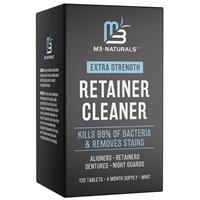- Nasal Dilators
- Nasal Dilators vs. Snoring Mouthpieces
- Nasal Dilators plus Snoring Mouthpieces
What is a Nasal Dilator?
A nasal dilator is a device designed to help improve airflow through the nostrils. They can be particularly useful for people who suffer from nasal congestion or other conditions that affect their ability to breathe through the nose. There are two primary types of nasal dilators: external and internal. External nasal dilators are adhesive strips that are applied on the outside of the nose. They physically pull open the nostrils to allow for better airflow. Internal nasal dilators, on the other hand, are inserted into the nostrils and help to keep them open from the inside.
How to Use a Nasal Dilator?
Preparation
Before using a nasal dilator, it's essential to ensure that your nose is clean and free from any oils or moisturizers. This will ensure a firm grip for external dilators and comfort for internal ones. Gently wash your face and nose with mild soap and water, and pat dry.
Application
For external nasal dilators, peel the backing off the adhesive strip and position it over the bridge of your nose. The sticky side should face your skin. Press down gently to ensure that the strip adheres properly. For internal nasal dilators, gently insert the device into each nostril. Ensure that it's comfortable and not causing any pain or extreme discomfort.
Removal
To remove the nasal dilator, especially external ones, wet the area with water to loosen the adhesive. Gently peel off the strip from one end to the other. For internal dilators, gently pull the device out.
What is the Best Nasal Dilator?
Choosing the best nasal dilator largely depends on individual preferences, the cause of the breathing issue, and the desired outcome. Some users prefer external strips because they are less invasive, while others opt for internal devices for more prolonged use and increased comfort.
Check out some of the newest nasal dilators here.
Popular brands have received positive feedback for their effectiveness and comfort. One such brand is Mute.
However, it's always recommended to consult with a healthcare professional before choosing a nasal dilator to address a specific medical condition.
How to Use Mute Nasal Dilator?
The Mute Nasal Dilator is a popular internal nasal dilator known for its comfort and effectiveness. Here's how to use it:
- Start by ensuring that your hands and nose are clean.
- Hold the device by its bridge with the curved arms facing towards you.
- Gently insert the device into your nostrils. The curved arms should sit comfortably inside, keeping the nostrils open.
- Adjust the device as necessary to ensure it sits securely and comfortably.
- When removing, grip the bridge of the device and gently pull out.
How Does a Nasal Dilator Work?
Nasal dilators work by physically opening up the nostrils to improve airflow. Whether they are placed externally or internally, their primary function remains the same. By increasing the diameter of the nostrils, nasal dilators can effectively reduce the resistance to incoming airflow. This can be particularly beneficial for those who experience nasal congestion or have structural abnormalities like a deviated septum. Improved airflow can lead to better oxygenation during activities like exercise and can even reduce symptoms like snoring.
Mechanism of Action
- Snoring Mouthpieces (MADs): These devices pull the lower jaw forward and lift the soft palate. This action enlarges the airway at the back of the throat, reducing vibrations that result in snoring.
- Nasal Dilators: By expanding the nostrils externally or internally, they enhance airflow, beneficial for those with nasal obstructions or congestion.
Targeted Causes of Snoring
- Snoring Mouthpieces: Ideal for people with snoring caused by a partial obstruction of the upper airway, often due to tongue and throat muscles relaxing during sleep.
- Nasal Dilators: Suited for snoring due to nasal congestion or obstructions like allergies, colds, or structural issues.
Comfort and Adjustability
- Snoring Mouthpieces: Comfort varies. Initial use might result in discomfort, but many modern devices are adjustable for comfort.
- Nasal Dilators: Typically comfortable, with users adjusting quickly, especially to external adhesive types.
Maintenance and Lifespan
- Snoring Mouthpieces: Need regular cleaning to prevent bacterial buildup. With care, they can last from 6 months to a few years.
- Nasal Dilators: External adhesive types are often single-use. Internal dilators, made from materials like silicone, can last several months with proper care.
Price
- Snoring Mouthpieces: Generally more expensive, especially dentist-fitted ones. Over-the-counter options are more affordable.
- Nasal Dilators: Typically cheaper than mouthpieces. Internal dilators might be pricier but are still more affordable than most MADs.
Potential Side Effects
- Snoring Mouthpieces: Possible side effects include jaw discomfort, tooth pain, excessive salivation, or dry mouth.
- Nasal Dilators: Few side effects, though some may experience slight discomfort or an allergic reaction to adhesive types.
Benefits of Combining the Two
- Comprehensive Treatment: Addressing multiple causes of snoring, with the mouthpiece for throat obstructions and the nasal dilator for improved nasal airflow.
- Enhanced Comfort: Using a nasal dilator can facilitate easier nose breathing, making a snoring mouthpiece more comfortable.
- Improved Effectiveness: For multi-factorial snoring causes, both devices can yield better results than just one.
Considerations
- Individual Needs: Understand the primary snoring cause. A nasal dilator might be unnecessary if nasal congestion isn't an issue.
- Adjustment Period: Initial use of both devices might feel cumbersome, but many individuals adjust over time.
- Cost: The combined purchase can be pricier than a single device. Assess if the benefit justifies the cost.
- Medical Advice: Consult with a sleep or ENT specialist before using both devices.
Conclusion
Combining nasal dilators with snoring mouthpieces can be beneficial for those with snoring caused by both nasal and throat obstructions. It offers a comprehensive solution for multiple airflow resistance areas. However, understanding specific needs and seeking expert advice is crucial.
In conclusion, nasal dilators are effective tools for improving nasal breathing. By understanding their mechanism and using them correctly, users can experience significant relief from breathing difficulties.




